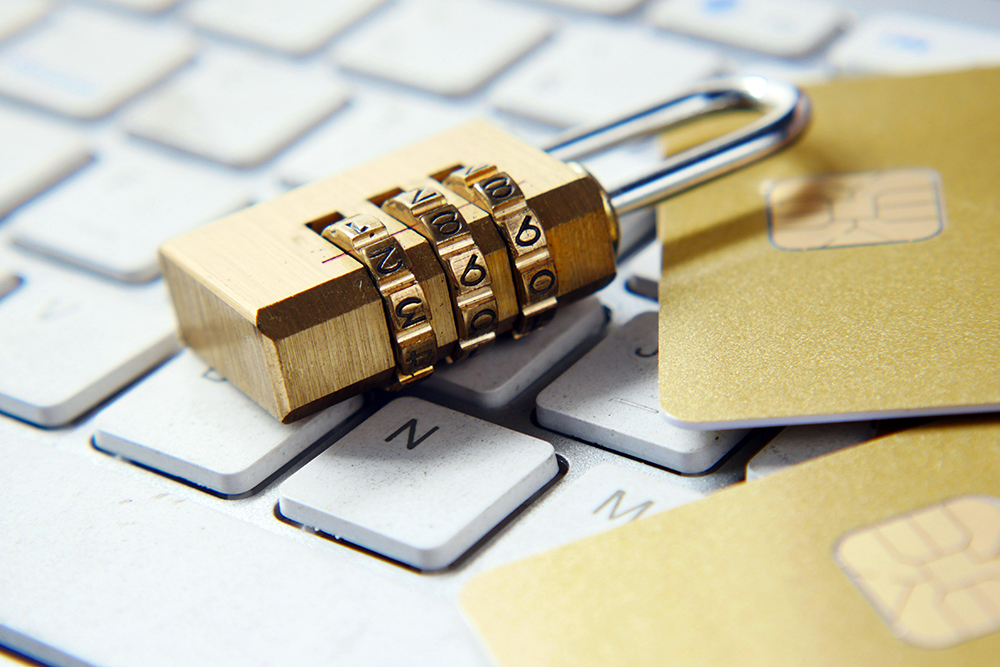According to the Federal Trade Commission, a new case of identity theft occurs every 22 seconds, and nearly 33 percent of Americans have faced some type of identity theft attempt. Identity theft occurs when a criminal uses your personal information to commit fraud, typically for financial gain. Fortunately, there are some simple steps you can take to avoid being a victim of identity theft.
1. Sign up for an identity theft protection service.
While an identity theft service can’t prevent identity theft, it can promptly alert you to suspicious activity and help you recover any damages. For a monthly fee, these services monitor your credit reports, social media activity, financial accounts, medical information, and more in order to identify suspicious activity.
2. Use strong passwords.
Choose strong passwords that are difficult to guess, change your passwords often, and resist the urge to assign the same password to every account. That way, if one account is hacked, other accounts are still protected. Also, while it may seem obvious, don’t keep a list of passwords in an unsecured location.
3. Enable multifactor authentication.
Multifactor authentication offers an extra layer of password security. It requires that you provide another piece of data to gain access to your account, in addition to your password. For example, your bank may send a PIN via text to your phone number on file. Whenever possible, enroll in multifactor authentication. That way, even if someone learns your password, he/she won’t be able to access your account.
4. Monitor your accounts.
One of the best ways to quickly identify fraudulent transactions is by consistently monitoring your accounts. At least twice a week, log into your various accounts to review recent transactions. Also, consider establishing banking alerts to notify you of any unauthorized or suspicious activity.
5. Protect your mail.
It’s not just your online data that’s at risk. Hard copy documents also contain valuable personal data that can be used by fraudsters. That’s why it’s important to promptly pick up your mail and shred all statements and documents before putting them in the trash.
6. Review your credit reports.
Each of the major credit bureaus (Equifax, Experian, and TransUnion) allows consumers to access one free report a year. Take advantage of this opportunity to check your credit reports and make sure there are no surprises or errors.
7. Maintain security software.
Your internet-enabled devices should be equipped with strong, updated security software that regularly checks for suspicious and harmful activity. Make sure your software includes firewalls, anti-virus protection, and intrusion detection. Never connect to the internet without strong security software in place.
8. Keep your operating system and software up to date.
Software and operating system updates often include security fixes, which is why it’s important to enable automatic updates on all devices. You should also be using a well-respected internet browser, such as Chrome or Firefox, as they’re more likely to be regularly updated with the latest security protections.
9. Never click on suspicious emails.
If you receive an email that looks suspicious, it probably is. Resist the urge to click any links, and never provide personal information over email.
If you receive an email regarding your finances that appears to be from a financial institution, the IRS or another reputable organization, call the toll-free number of that institution (the one listed on the company’s website, not a phone number in the suspicious email) to verify the email’s authenticity before you provide any information.
10. Fully wipe old electronics.
Even if you delete files from old computers, they can still be recovered by tech-savvy fraudsters. Before donating old electronics, use an overwriting software to fully wipe all personal data.
Gene Gard, CFA, CFP, CFT-I, is a Partner and Private Wealth Manager with Creative Planning. Creative Planning is one of the nation’s largest Registered Investment Advisory firms providing comprehensive wealth management services to ensure all elements of a client’s financial life are working together, including investments, taxes, estate planning, and risk management. For more information or to request a free, no-obligation consultation, visit CreativePlanning.com.

